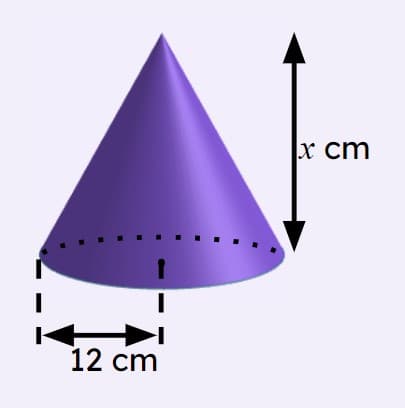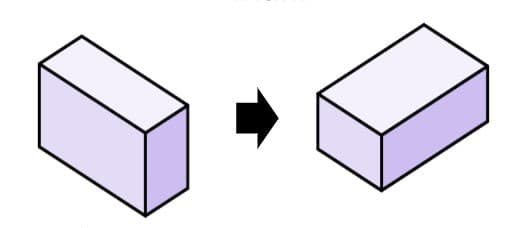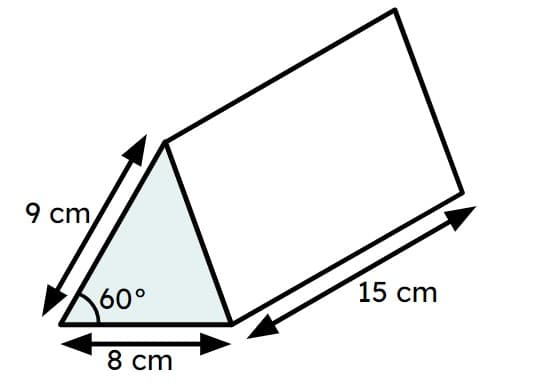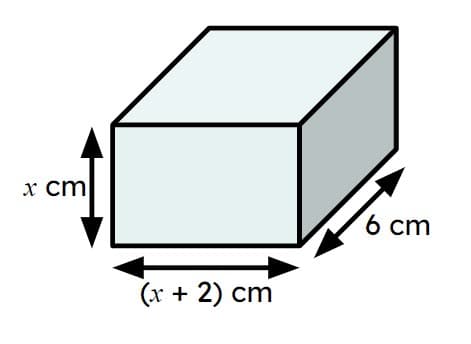Myths about teaching can hold you back


- Year 11•
- Higher
Advanced problem solving with further surface area and volume
I can use my enhanced knowledge of surface area and volume to solve problems.


- Year 11•
- Higher
Advanced problem solving with further surface area and volume
I can use my enhanced knowledge of surface area and volume to solve problems.
These resources will be removed by end of Summer Term 2025.
Switch to our new teaching resources now - designed by teachers and leading subject experts, and tested in classrooms.
These resources were created for remote use during the pandemic and are not designed for classroom teaching.
Lesson details
Key learning points
- The surface area of any solid can be calculated by a known method.
- The volume of any solid can be calculated by a known method.
- Writing an algebraic statement about surface area/volume can be done from a diagram.
Keywords
Volume - The volume is the amount of space occupied by a closed 3D shape.
Surface area - The surface area is the total area of all the surfaces of a closed 3D shape. The surfaces include all faces and any curved surfaces.
Compound shape - A compound shape is a shape created using two or more basic shapes. A composite shape is an alternative for compound shape.
Common misconception
When questions are in context, the length may be described as the depth or height and this can cause some pupils to struggle if they have learned a formula with a particular word.
Remind pupils that the volume of a 3D shape comes from the area of a cross section multiplied by the height or depth. They may need to evaluate a perpendicular length from other given information, using trigonometry or Pythagoras' theorem.
To help you plan your year 11 maths lesson on: Advanced problem solving with further surface area and volume, download all teaching resources for free and adapt to suit your pupils' needs...
To help you plan your year 11 maths lesson on: Advanced problem solving with further surface area and volume, download all teaching resources for free and adapt to suit your pupils' needs.
The starter quiz will activate and check your pupils' prior knowledge, with versions available both with and without answers in PDF format.
We use learning cycles to break down learning into key concepts or ideas linked to the learning outcome. Each learning cycle features explanations with checks for understanding and practice tasks with feedback. All of this is found in our slide decks, ready for you to download and edit. The practice tasks are also available as printable worksheets and some lessons have additional materials with extra material you might need for teaching the lesson.
The assessment exit quiz will test your pupils' understanding of the key learning points.
Our video is a tool for planning, showing how other teachers might teach the lesson, offering helpful tips, modelled explanations and inspiration for your own delivery in the classroom. Plus, you can set it as homework or revision for pupils and keep their learning on track by sharing an online pupil version of this lesson.
Explore more key stage 4 maths lessons from the 2D and 3D shape: surface area and volume (pyramids, spheres and cones) unit, dive into the full secondary maths curriculum, or learn more about lesson planning.

Equipment
Licence
Prior knowledge starter quiz
6 Questions
Q1.Match each measurement to the correct formula.
Volume of hemisphere -
$$\frac{2}{3} \pi r^3$$
Volume of cone -
$$\frac{1}{3}\pi r^2 h$$
Volume of cylinder -
$$ \pi r^2 h$$
Volume of pyramid -
$$\frac{1}{3}\times \text{area of base} \times \text {height}$$
Volume of sphere -
$$\frac{4}{3} \pi r^3$$
Q2.Select the algebraic expression for the volume of this cone.

Q3.The volume of this cone is the same as the volume of a sphere with a radius of 12 cm. The height, $$x$$ of the cone is cm.

Q4.Find the surface area of a cube with a volume of 512 cm².
Q5.The height, $$h$$, of a cone is three times the length of its radius. Find an algebraic expression for the volume of the cone in terms of $$h$$.
Q6.The radius of a cylinder is half of the height of the cylinder. The volume of the cylinder is 1024𝜋 cm³. The surface area of the cylinder, in terms of 𝜋, is cm².
Assessment exit quiz
6 Questions
Q1.Match each measurement to the correct formula.
Surface area of a sphere -
$$2 \pi r^2$$
Volume of cylinder -
$$\pi r^2 h$$
Area of curved surface of cone -
$$\pi r l$$
Volume of sphere -
$$\frac{4}{3}\pi r^3$$
Curved surface area of cylinder -
$$2\pi r h$$
Volume of cone -
$$\frac{1}{3}\pi r^2h$$
Q2.The diagram shows a cuboid juice carton which is partially filled with juice. Laura changes the orientation of the carton. Which statement is true?

Q3.Calculate the volume of this prism.

Q4.The diagram shows a cuboid. The length of the base is 2 cm greater than the height. Find an expression for the volume of the cuboid.

Q5.The diagram shows a cuboid. The length of the base is 2 cm greater than the height. The volume of the cuboid is 90 cm³. The surface area of the cuboid is $$x$$ is cm².


